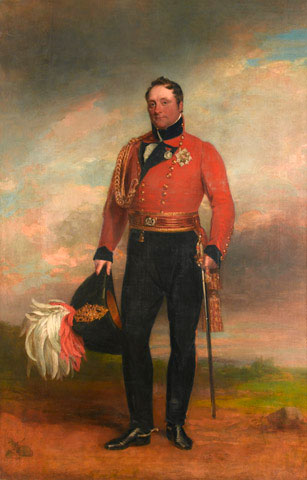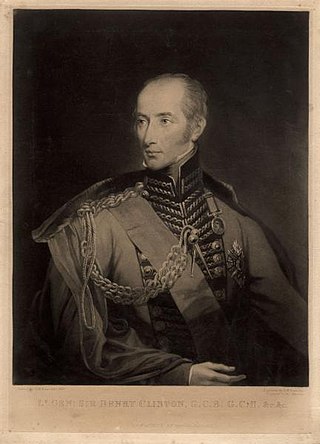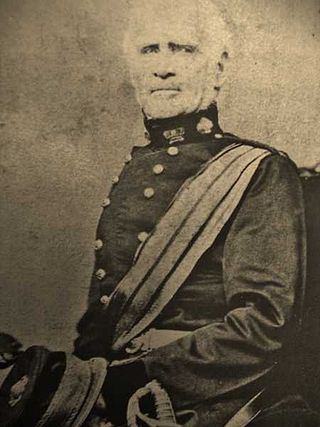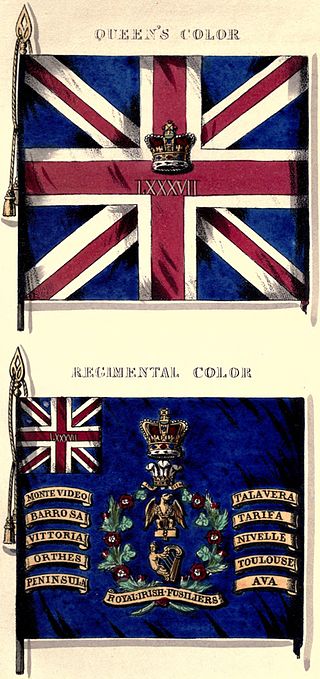
Field Marshal FitzRoy James Henry Somerset, 1st Baron Raglan,, known before 1852 as Lord FitzRoy Somerset, was a British Army officer. When a junior officer, he served in the Peninsular War and the Waterloo campaign, latterly as military secretary to the Duke of Wellington. He also took part in politics as Tory Member of Parliament for Truro, before becoming Master-General of the Ordnance.

General Rowland Hill, 1st Viscount Hill, was a British Army officer, politician and peer who served in the Napoleonic Wars as a brigade, division and corps commander. Hill became Commander-in-Chief of the Forces in 1828. Well-liked by the soldiers under his command, he was nicknamed "Daddy Hill".

General Sir George Brown, was a British officer notable for commands in the Peninsular War and the Crimean War.

Lieutenant-General Sir Henry Clinton was a British Army officer and a general officer during the Napoleonic Wars.

Sir George Murray was a British soldier and politician from Scotland.

Field Marshal Sir John Fox Burgoyne, 1st Baronet, was a British Army officer. After taking part in the Siege of Malta during the French Revolutionary Wars, he saw action under Sir John Moore and then under the Duke of Wellington in numerous battles of the Peninsular War, including the Siege of Badajoz and the Battle of Vitoria. He served under Sir Edward Pakenham as chief engineer during the War of 1812. He went on to act as official advisor to Lord Raglan during the Crimean War advocating the Bay of Kalamita as the point of disembarkation for allied forces and recommending a Siege of Sevastopol from the south side rather than a coup de main, so consigning the allied forces to a winter in the field in 1854.

The 88th Regiment of Foot (Connaught Rangers) was an infantry Regiment of the British Army, raised in 1793. Under the Childers Reforms it amalgamated with the 94th Regiment of Foot to form the Connaught Rangers in 1881.
The 28th Regiment of Foot was a line infantry regiment of the British Army, raised in 1694. Under the Childers Reforms it amalgamated with the 61st Regiment of Foot to form the Gloucestershire Regiment in 1881.

Field Marshal Sir William Shearman Rowan, was a British Army officer. He served in the Peninsular War and then the Hundred Days, fighting at the Battle of Waterloo and taking part in an important charge led by Sir John Colborne against the Imperial Guard when he was wounded. He later assisted Colborne in Colborne's new role as Acting Governor General of British North America during the rebellions by the Patriote movement in 1837. Rowan returned to Canada as Commander-in-Chief, North America in which role he made an important conciliatory speech in response to the burning of the Parliament Buildings in Montreal by an angry mob in April 1849.

The 50th Regiment of Foot was an infantry regiment of the British Army, raised in 1755. Under the Childers Reforms it amalgamated with the 97th Regiment of Foot to form the Queen's Own Royal West Kent Regiment in 1881.
The 38th Regiment of Foot was an infantry regiment of the British Army, raised in 1705. Under the Childers Reforms it amalgamated with the 80th Regiment of Foot to form the South Staffordshire Regiment in 1881.
The 66th (Berkshire) Regiment of Foot was an infantry regiment of the British Army, raised in 1756. Under the Childers Reforms it amalgamated with the 49th (Hertfordshire) Regiment of Foot to form the Princess Charlotte of Wales's in 1881.

The 87th Regiment of Foot was an infantry regiment of the British Army, raised in 1793. Under the Childers Reforms it amalgamated with the 89th Regiment of Foot to form the Princess Victoria's in 1881.

General Sir Edward Bowater KCH was a British soldier and courtier.

The 94th Regiment of Foot was a British Army line infantry regiment, raised as the Scotch Brigade in October 1794. It was renumbered as the 94th Regiment of Foot in December 1802 and disbanded in December 1818. The regiment was reformed in December 1823 and served until 1881 when it amalgamated with the 88th Regiment of Foot to form the Connaught Rangers.

Field Marshal Sir Charles Yorke GCB was a senior British Army officer. He fought in many of the battles of the Peninsular War and of the Hundred Days, seeing action as an extra aide-de-camp to Major-General Frederick Adam, commander of the 3rd Light Brigade, at the Battle of Waterloo. After that he became Deputy Commander of the British forces in South Africa during the latter stages of the Eighth Xhosa War. He went on to be Military Secretary, ultimately earning promotion to field marshal for his competence in that role.
General Sir Charles Grene Ellicombe KCB was an English General and a Royal Engineer, reaching the rank of Colonel Commandant within the Corps. He was created one of the first Companions of the Order of the Bath, and advanced to the honour of a Knight Commander of the Order of the Bath.

Lieutenant General Sir James Holmes Schoedde KCB was a British Army officer who became colonel of the 2nd Regiment of Foot and the 55th Regiment of Foot.

General Sir James Archibald Hope, was a senior officer in the British Army.

Lieutenant-General Sir Robert Lawrence Dundas was a British Whig and military commander during the Peninsular War. He was a Member of Parliament in the House of Commons representing Malton from 1807 to 1812, East Retford from 1826 to 1827, and Richmond from 1828 to 1834 and from 1839 to 1841.

















